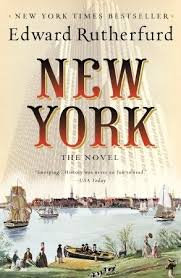I’m not alone in the perverse fascination with Mormon polygamy. Two cable shows, “Sister Wives” and “Big Love” (neither of which I have seen.) averaged 1.75 million viewers per show. Warren Jeffs and his band of polygamists in Colorado City, AZ and Texas repeatedly make news with sensational trials for raping underage girls (marriage in the Fundamentalist Church of Jesus Christ of the Later Day Saints - FLDS) and welfare fraud because the mothers claim state support and food stamps for each child.
So, I grabbed The Sound of Gravel when browsing the shelves of the Chicago Public Library--it was an unexpected find. The story of Ruth Wariner is different from the FLDS. Her family lives in LeBaron, Mexico, home to a polygamist LDS sect founded by her grandfather in 1944.
The following is from Wikipedia on the section “Mormons and Polygamy”.
“In 1862, the United States Congress passed the Morrill Anti-Bigamy Act, which prohibited plural marriage in the territories. In spite of the law, Mormons continued to practice polygamy, believing that it was protected by the First Amendment. In 1879, in Reynolds v. United States, the Supreme Court of the United States upheld the Morrill Act, stating: "Laws are made for the government of actions, and while they cannot interfere with mere religious belief and opinion, they may with practices.
In 1890, church president Wilford Woodruff issued a Manifesto that officially terminated the practice of polygamy. Although this Manifesto did not dissolve existing plural marriages, relations with the United States markedly improved after 1890, such that Utah was admitted as a U.S. state in 1896. After the Manifesto, some Mormons continued to enter into polygamous marriages, but these eventually stopped in 1904 when church president Joseph F. Smith disavowed polygamy before Congress and issued a "Second Manifesto", calling for all plural marriages in the church to cease and established excommunication as the consequence for those who disobeyed.”
Many polygamist Mormons settled in Mexico, where they were tolerated. Thus began the back and forth cycle for the members. They always obtained U.S. citizenship, and when welfare was established, assured that they returned each month to collect their checks. Each “wife” declared that she did not know the father, so there was no chasing for child support, etc.
Ruth Wariner’s story begins in Mexico, her mother is the third wife of an entitled failure, father of 47 children, who feels little responsibility for providing for either wives or offspring. These are cult members, indoctrinated in the original Book of Mormon which endorses polygamy and practically deifies polygamist men. There is unhappiness within her community, but little thought of revolt.
As the mother and children shuffle back and forth between grandparents in California, who have returned to the official LDS religion, and LeBaron. The children begin to understand that their settlement life style offers stark poverty and no opportunity. Their religion, instead of providing consolation, threatens the women and empowers the men. Since The Sound of Gravel is a memoir, we know from the outset that Ruth and her siblings survive, but not before catastrophe decimates the fragile family. This is a quick and engrossing read.
If you are interested in another graphic memoir of a totally dysfunctional Mormon family, please read Melissa Anderson’s Eleven Regrets (Little Bear Publications, 2015). Beautifully written, it is perhaps the most disturbing memoir ever.
Recommended




















